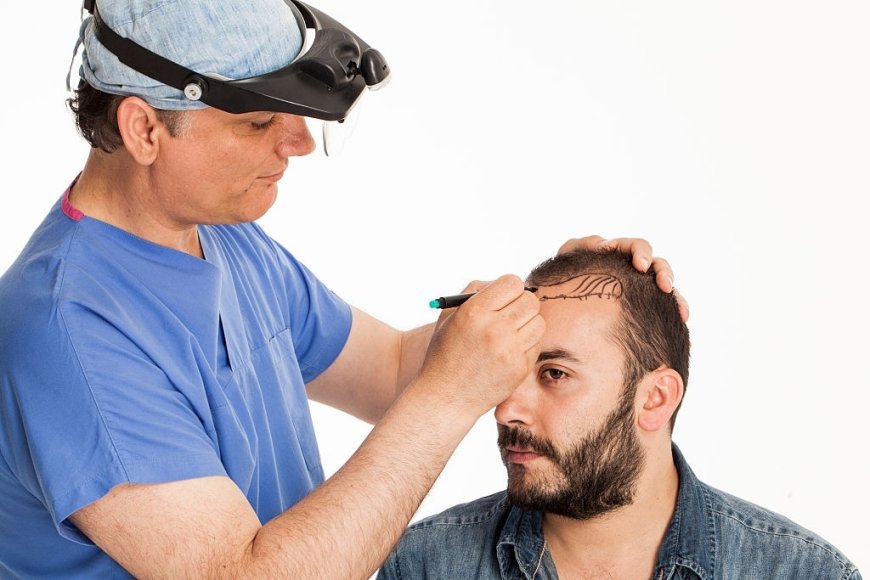Comparing Non-Surgical and Surgical Hair Restoration Options
A hair transplant is a surgical treatment used to restore hair in bald or thinning areas of the scalp by moving healthy hair from one location to another. Under local anesthetic, the treatment is often carried out as an outpatient surgery.

Hair loss can significantly impact self-confidence, leading many to explore ways to restore their hairline and density. If you're considering options for restoring hair, it’s essential to know the differences between non-surgical and surgical methods to make an informed choice. This guide offers an overview of both approaches, helping you decide which method best aligns with your goals and lifestyle. If you’re in Pakistan’s capital, exploring Hair Transplant in Islamabad can provide you with options for both surgical and non-surgical hair restoration treatments at highly regarded clinics.
Non-Surgical Hair Restoration Options
Non-surgical hair restoration methods are popular for those seeking less invasive ways to manage hair loss. These approaches can provide moderate improvement in hair density and slow down hair loss but may not be suitable for individuals with significant bald areas.
-
Medications
- Minoxidil: Commonly available over-the-counter, Minoxidil stimulates hair growth in certain individuals by improving blood flow to hair follicles. It’s generally used on the scalp twice daily and may take a few months to show visible results.
- Finasteride: Available only by prescription, Finasteride reduces DHT levels, a hormone associated with hair loss. It’s more effective for men and requires consistent use to maintain results.
-
Low-Level Laser Therapy (LLLT)
- LLLT uses laser devices to stimulate hair follicles, promoting growth and improving hair thickness. Available in the form of combs, helmets, or in-office treatments, LLLT may be beneficial for people experiencing early stages of hair loss. However, results vary, and it requires regular sessions.
-
Platelet-Rich Plasma (PRP) Therapy
- PRP therapy involves extracting a small amount of blood, processing it to concentrate the platelets, and injecting it into the scalp. Platelets contain growth factors that help strengthen existing hair and may stimulate new growth. PRP has shown promising results for some, but the treatment requires multiple sessions over a few months.
-
Topical Treatments and Hair Fibers
- Some individuals use thickening shampoos, conditioners, or hair fibers that add volume to the hair, making it appear fuller. While these products don’t promote new growth, they can improve the appearance of thinning areas temporarily.
Surgical Hair Restoration Options
For those with more advanced hair loss or seeking permanent solutions, surgical hair restoration offers effective and lasting results. These techniques involve transferring hair from a donor area to areas experiencing thinning or baldness.
-
Follicular Unit Transplantation (FUT)
- FUT involves removing a strip of skin from the donor area (usually the back of the scalp), from which hair follicles are extracted and implanted in the balding area. Although FUT leaves a linear scar, it is generally covered by surrounding hair. This method can provide a higher number of grafts, making it ideal for extensive hair restoration.
-
Follicular Unit Extraction (FUE)
- FUE involves extracting individual hair follicles from the donor area and implanting them one by one into the recipient area. This technique minimizes visible scarring and allows for a more natural hairline. FUE is often preferred by those who want to wear shorter hairstyles as it doesn’t leave a noticeable linear scar.
-
Direct Hair Implantation (DHI)
- Similar to FUE, DHI involves extracting and directly implanting hair follicles. However, it uses specialized tools that minimize handling of follicles, potentially leading to higher survival rates. This method can provide a denser, natural-looking result, but it is often more time-consuming and may be costlier than other surgical options.
Which Option Is Right for You?
Choosing between non-surgical and surgical hair restoration methods depends on various factors, including the extent of your hair loss, budget, lifestyle, and expectations. Non-surgical methods are generally more affordable and can be beneficial for mild to moderate hair thinning. However, these solutions are temporary and require ongoing maintenance.
Surgical options, on the other hand, offer a more permanent solution for those with advanced hair loss. While they are more costly, they are effective in restoring hair density and providing natural-looking results. Consulting a hair restoration specialist can help determine the best approach based on your unique needs.
Conclusion
Selecting the right hair restoration option is a personal decision, and understanding the pros and cons of each method is essential. For individuals looking for expert care, Royal Cosmetics Surgery in Islamabad provides both surgical and non-surgical hair restoration solutions. Their experienced team can guide you through the options and help you decide on the best treatment path to achieve a fuller, more youthful hairline.
What's Your Reaction?























